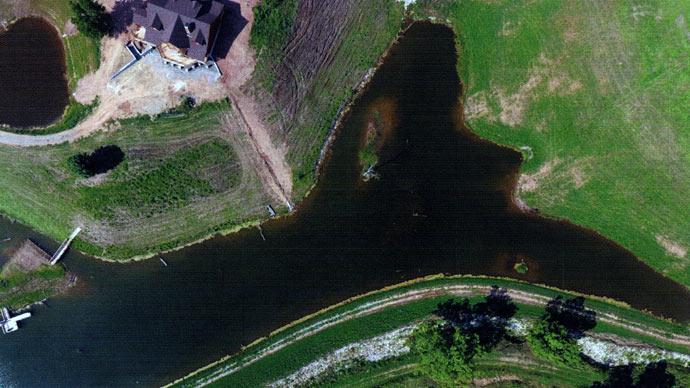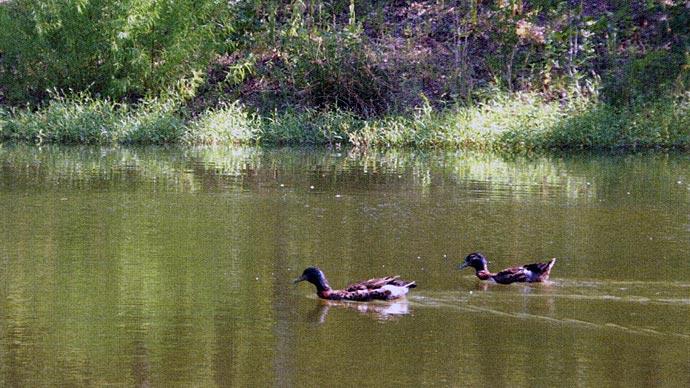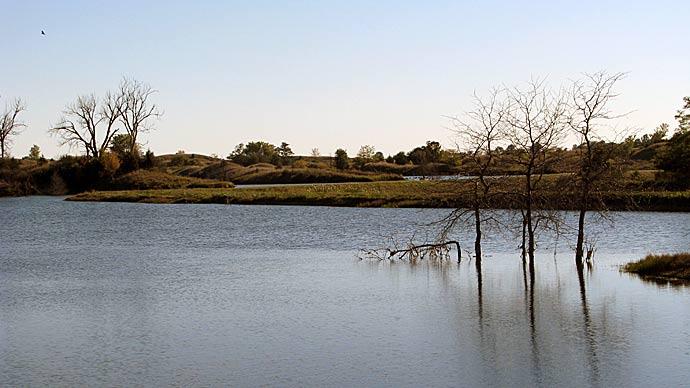
Let's do a little tree huggin! This term usually has something to do with people who are concerned with going above the norm while protecting the environment. That being the case, protecting the environment, I AM ONE! I just don't normally wrap my arms around the scratchy bark of a post oak tree covered with poison ivy. The truth is my actions and belief structure, and most likely yours, too, were in line with conservation of land long before it became popular. The Good Lord planted trees on the planet a long time ago to help us have a shady cool place in the summer, to have a picnic, and a good place to get away from the cold north wind in the winter. It's a safe haven for different wildlife, birds and squirrels especially. I even came across a sleepy possum curled up in a hollow of a crotch in the fork of two limbs of an old oak one time.
There is nothing more beautiful than the variety of colors of leaves in the fall of the year, except the green buds that start right after the long brown winter.
Almost all wildlife uses the cover of the trees to live and move around. They eat the nuts and fruits to stay alive as do us humans—there is nothing better than a good apple when hungry or a healthy deer, in hunting season. Some birds live on the ground but the woods and forests are the biggest part of where they feed and nest.
The root systems of trees help hold the dirt in place and on the shoreline, close to the water's edge, that makes root balls our friend.
But, small fibrous roots have been found as deep as fifteen feet when we remove trees on a dam site. As much as we love trees, a dam isn't where we ever want to find roots.
Rain falls to the earth and soaks into the ground. Root systems pick up the water, sends it up the trees, which transpires water back into the atmosphere via the leaves. Trees add oxygen and do their part to release water to add to the rains that fill our ponds.
The fact of life is this, the two most valuable assets a piece of property can have is water and trees. Removing one to get the other is something that needs thought and planning. When the decision is made to add some water to the property, and if the removal of trees is needed, it is time to slow down and take a good long look around. Think about it this way. If you remove a healthy, mature tree, you've likely altered at least fifty years of growth in just that small biome, not to mention the local ecosystem.
All good ponds start with some dreams, solid goals and a good plan. A big part of the plan is what to do with any trees that are in and around the pond site.
Here are a few rules, when making your plan.

First: It takes about thirty seconds to push a tree down, and never to this day have I figured out how to push one back up and it continue to live. I've tried it, it doesn't work.
Second: Some trees have to be removed for proper construction and some will be better left untouched.
Any tree in the foot print of the dam or the borrow area must be removed, along with all the roots. Any organic material—limbs, leaves, or the like, cannot be left in any of the dirt that is packed into the dam. Over a period of time, they will decompose and cause seepage problems.
All trees that have water rise on them will eventually die. No branches or leaves—only sticks above the water. Is that what you want?
When pond placement and eventual water line is being planned there are lots of things to consider. An important consideration is the trees. I've actually adjusted the projected spillway level of several ponds and lakes to save a favorite tree that has some sentimental value, or is being saved to add shade to the cabin or picnic area. I'm all in favor of that idea. The other side of the coin is also true. One land owner who spent a lot of fall afternoons on his hands and knees picking up tiny native pecans as a kid, made it clear he wanted that grove of trees be covered up with water, so he could catch bass from the canopy of several of those trees.
When staking the water line, remember some trees next to the water will also die over time. They are easy to remove after the pond is completed so letting them stay is not a deal breaker. Besides, our friend Dan VanSchaik, the wildlife guy, says a few dead trees around a pond are excellent for attracting wildlife. He calls them snags.
Consider treating the trees left in the water several different ways.
A. Let them stay as is; do not touch them with any piece of equipment. Keep in mind that they will soon turn into a single, dead stick and will be difficult to remove later. A good friend, Burl Wood, made the decision to leave trees in his lake. THIS DECISION WAS MADE WITH THE PERMISSION OF HIS LOVELY WIFE. The lake was finished, cozy cabin complete, the couple was relaxing, sitting on the porch, looking over the peaceful water into the setting sun and all Mrs. Wood could see were the decaying, dead sticks above the calm. After NO debate, the decision was reached that the sticks would be removed. The valve was opened to let a couple of feet of water out of the pond. Burl hooked his 15-foot trailer onto his bush-hog behind his tractor and backed it into the lake as far as possible. When I got there, he had his wet suit on and his chain- saw (that had been named MAN-OF-WAR) in hand cutting the trees as low as possible.
B. Mark the trees with ribbon or paint a couple of feet below the water level and cut then off with a chain saw, this time from dry land, before the pond fills. The structure of the tree will remain; the root system will also stay intact.
C. Get the heavy equipment cranked up and remove the trees. Some can be placed as fish structure; the rest can be burned on site. In today's world, this is the most common choice, especially since many trees aren't anywhere in the pond bottom where a fish might like to hang out.
The earthmoving contractor will know that nowhere in or around the dam should any trees be left—ever. Trees directly behind a dam may not cause any structural problems but it is not unusual to see some of them die after a few years, primarily because their ecosystem was seriously disturbed.
We like to build or leave islands in a lake as they add to the whole system, and most of the time is inexpensive to create. Plus, an island can use up a lot of extra dirt if that's a problem. Often, it is. In the last 35 years of my experience, any trees left on an island have died. That does not mean they will always die but so far, in my life, they have.
Mother Nature has a way of getting some species of trees growing on the islands, how and why that happens is not clear to me. That's why I lean on tree experts. They know. Planting some willow or cypress trees are an option, they both grow good around water. The book says their root systems will tolerate more than most trees.
Now for the dam. DO NOT PLANT ANY TREES ON A DAM. This is not negotiable, ever. They will cause problems over a period of time. Any shade or beauty they supply will be greatly outweighed by the damage the roots will cause. You can plant bushes or shrubs in a bucket along the top of a dam, if you would like them to accent an entry road but that is all you will be allowed to do. In the book, on scheduled maintenance of a dam, it states never let trees get started on a dam. When they do, cut them down immediately.
Existing dams: The country is full of dams build during the last 75 years. Some have never had a tree anywhere near it; others are covered from top to bottom and front to back. To the untrained eye, this may be a work of beauty, and may supply some shade, and maybe a nice place to walk or fish. Do not be fooled, the trees on the
dam are not our friend, they are the enemy.
The question is always asked. What should be done?
The reason for not letting trees grow on a dam is the root system will head to the water. That is how they get a lot of their food for growth. That is what they do. The root system will create a place for water to channel. And that is the job of water, to find a place to go. When the tree dies and roots start to decompose they will allow water an easy path through the dirt. Once this starts, it never gets better, it always gets worse. Never let it get to this stage, if possible. Unlike a scratch on your arm, this situation won't heal.
With the trees already in place, the book states, if they are four inches or less in diameter, get rid of them. Not with a dozer but a chainsaw. Any time saved by using heavy equipment, will not equal up to the mess it will make on the slopes. Trees bigger than four inches, let go. The thinking is the roots may be at the water already and killing the tree will only speed up the decomposing process.
Another rule in the book on scheduled maintenance of a dam, is keep a close eye on the back side of a dam that has mature trees. Look for seeps, wet weather grass and wet weather trees. Water seeping through a dam can turn into a big problem, but this may or may not require immediate action. Once in a while a dam with only one or two big trees may be treated but only after some careful thought and planning. Repairing a root filled dam can be a time consuming process and should not be tackled unless it is necessary.
I'll keep on with a tree-huggin' attitude. I hope you will, too. Just hug the right trees.
Reprinted with permission from Pond Boss Magazine



